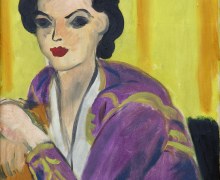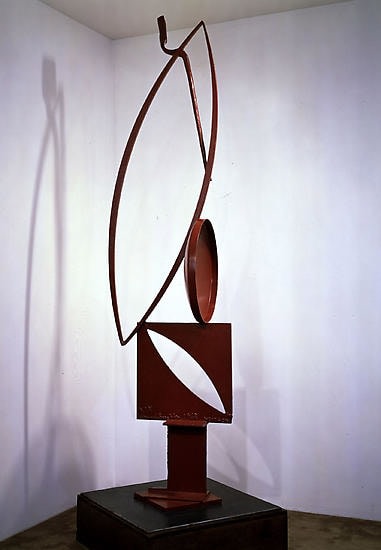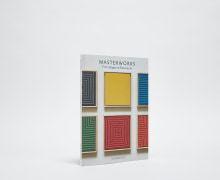
Born in Indiana in 1906, David Smith studied at Ohio University and the University of Notre Dame before dropping out at the age of nineteen to work as a welder and a riveter for the Studebaker automobile factory in South Bend, Indiana. In 1927 Smith enrolled at the Art Students League of New York, where he became friends with Arshile Gorky, Willem de Kooning, and Jackson Pollock.
In a 1929 article in Cahiers d'Art, Smith saw Pablo Picasso's sculptural iron constructions, a pioneering medium developed by Picasso and Julio Gonzalez. Inspired by their work and his previous experience in industrial welding, Smith began making sculptures out of steel and found scrap material. He devoted himself entirely to these metal sculptures, bringing the modern techniques of Gonzalez, Picasso, Alberto Giacometti, and the Russian Constructivists to the traditional domain of sculpture in America. In particular, he adopted the Cubist sculptural mode of "drawing in space" by relating two-dimensional forms to three-dimensional space. Smith "drew" with steel in space by welding together fragmented pieces of metal to create open, linear sculptures. These works fuse organic and mechanic elements to achieve a sense of eloquent, overall unity. By experimenting with abstract forms and open space, Smith freed American sculpture from the tradition of well-modeled, figurative forms.
Smith's sculptures were also revolutionary in their use of industrial materials; he believed that artists should embrace these new materials and techniques. He described steel: "The metal itself possesses little art history. What associations it possesses are those of this century: power, structure, movement, progress, suspension, destruction and brutality." By working with industrial materials, Smith captured America's development from a rural, agricultural society into an urban, industrial power.
In 1940, Smith moved permanently to Bolton Landing, the home he purchased with his wife in upstate New York. In moving to Bolton Landing, he was able to create much larger welded sculptures. He explored the possibilities of sculpture at Bolton Landing until 1965, when he died in a tragic car accident.




